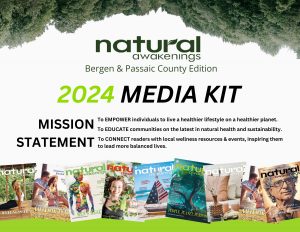Clean and Renewable Energy: New Advancements That Promise a Greener Future
As the demand for energy continues to rise, the need for renewable, natural sources has never been clearer. Groundbreaking advancements in clean energy are poised to replace—or, at the very least, significantly diminish—our dependence on fossil fuels, offering a path toward impactful reductions in greenhouse gas emissions. With broad acceptance of such innovations, a green, sustainable future is within reach.
Solar Energy Advancements
A single hour of sunlight hitting the planet contains more energy than we use in a year, but the challenge is to harness it efficiently. One innovation stacks an ultra-thin layer of perovskite minerals atop a standard silicon solar cell to capture a broader spectrum of sunlight.
These so-called “tandem solar cells” boast an impressive efficiency of more than 34 percent, compared to 20 percent with most residential solar panels. A single tandem panel can generate significantly more electricity, offering a better return on investment while conserving roof space. In September 2024, Britain’s Oxford PV began selling these panels in the United States.
The use of floating solar panels increases opportunities for energy production, minimizes land use, reduces water evaporation and serves as shade over a body of water. The solar panels are cooled by the water, making them more efficient. A recent study published in Solar Energy estimated that federally controlled reservoirs using floating panels could generate about half of future U.S. solar generation needs.
Ambient Photonics, in California, was inspired by photosynthesis to develop a solar cell that can generate power from low-level ambient light rather than direct sunlight. These indoor solar cells use a special dye to absorb light and create energy, making them more versatile and efficient than traditional solar panels. Because they are thin, flexible and can be applied to most surfaces, they could potentially replace batteries.
Korean scientists published the results of their work in fabricating flexible, transparent solar cells in the journal Nature in 2023. Commercialization of such technology would allow windows and skylights to bring in natural light while contributing to the building’s energy supply.
Wind Energy Innovations
Next-generation turbine designs are setting new benchmarks for wind energy performance and efficiency. General Electric’s Haliade-X offshore wind turbine with 350-foot-long blades has the capacity to generate more than 12 megawatts of power, doubling the energy of their predecessors.
Offshore wind farms, where winds are stronger and more consistent, are also moving to new frontiers. Employing floating turbines attached to buoys, the Hywind project located 87 miles off the coast of Norway is estimated to eliminate 200,000 tons of carbon dioxide emissions annually.
Progress has also been made to tackle the environmental challenges of retired turbine blades that are comprised of fiberglass and carbon fiber. Researchers from the University of California, Davis are testing biodegradable blades using eco-friendly materials like bamboo, mycelium and agricultural waste.
Stora Enso, one of the largest private forest owners in the world, has partnered with Voodin Blade Technology of Germany to make sustainable wooden blades and has also partnered with Modvion of Sweden to make wood the material of choice for their wind turbine towers.
Role of Artificial Intelligence
Artificial intelligence is revolutionizing the renewable energy landscape, enabling real-time monitoring and optimization of energy generation and distribution across solar, wind and geothermal sources, optimizing energy storage solutions and detecting maintenance needs before issues arise to ensure peak performance year-round.
Overcoming the Challenges
Even with its impressive growth, the renewable energy sector faces several challenges.
Because the efficiency of solar and wind power is dependent on weather conditions, advancements in energy storage are critical to bridge the gaps between supply and demand. This is where high-capacity batteries and pumped-storage hydroelectricity come in.
Existing energy grids and infrastructure were designed with fossil fuels in mind, whereas renewable sources are decentralized and require different setups. Investments are needed to modernize grid systems to handle these novel demands.
Public resistance, lack of awareness or misconceptions about renewable technologies can slow adoption rates. Empowering local communities to participate in renewable energy projects can foster a sense of ownership while addressing specific local needs and concerns.
Despite these obstacles, the promise of a sustainable energy future that benefits people and the planet is worthy of the effort.
Tom Whittle is the national publishing manager of Natural Awakenings magazine.




























